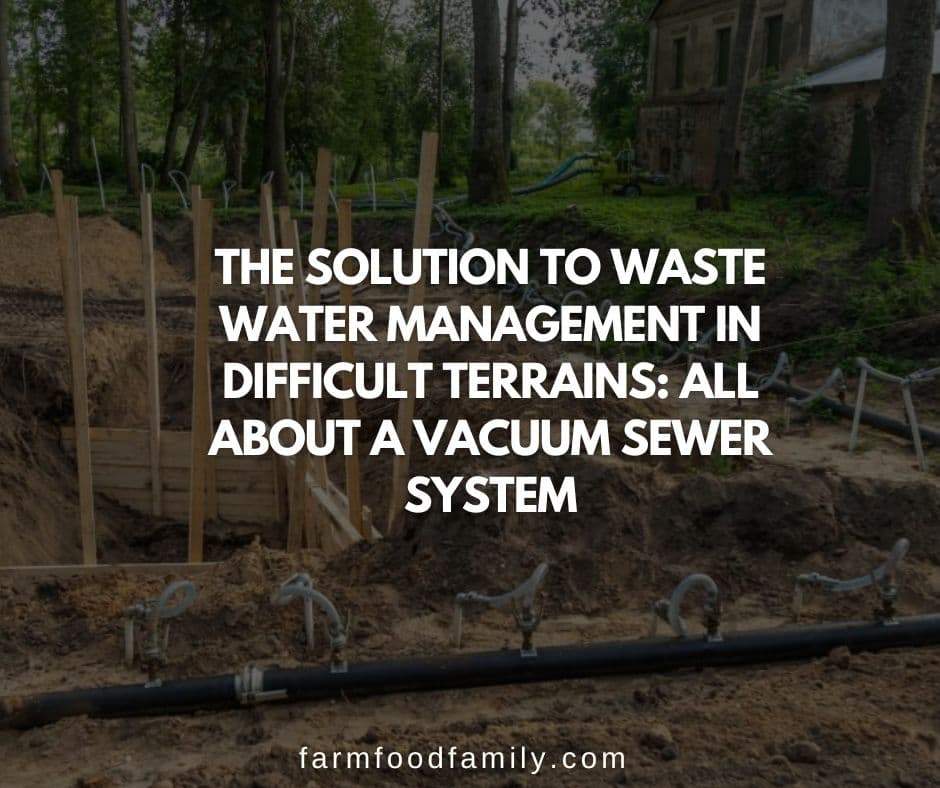A vacuum sewer system is a modern approach to handling wastewater in difficult-to-reach areas. They have a number of advantages such as cost-effectiveness, flexibility and efficiency. In this article, you’ll learn more about these advanced systems and their advantages.

What is a vacuum sewer system?
A vacuum sewer system is a way of collecting and transporting waste water using vacuum pumps. It consists of a network for small diameter pipes that connect individual buildings, such as homes, to a main vacuum pipeline.
This main pipeline is connected to a vacuum station, which contains a pump that creates the vacuum in the pipes. Because of the vacuum pressure, sewage is able to move through the pipeline efficiently over long distances.
This makes a vacuum sewer system a suitable option for areas with difficult terrain or limited space where traditional gravity sewerage may not be possible.
Vacuum sewer systems are more reliable
A vacuum sewer system has several features that makes it more reliable than traditional gravity sewerage. For example, vacuum systems are less prone to blockages caused by debris and grease, which is a common problem in traditional gravity-based sewer systems.
A vacuum sewer system is naturally less affected by changes in elevation as it uses vacuum pressure instead of gravity. This further reduces the risk of backups and ensures a consistent flow of sewage throughout the entire system.
Installing a vacuum sewer system in difficult to access terrain
Not only is a vacuum sewer system more reliable, another added benefit is that they are an excellent solution for challenging terrains, such as hills, mountains and areas by the sea.
Regular sewage systems rely on the force of gravity to move wastewater towards a treatment plant, which can be hard to achieve in areas with rugged terrain as digging trenches that deep might not always be possible.
A vacuum sewer system, on the other hand, can be installed in locations where it may be impractical or impossible to use gravity systems. That is because a gravity sewer system requires smaller, less deep trenches to be dug and their small diameter pipelines are much more flexible, making it easier to change course when stumbling upon hard terrain, existing pipelines or electricity lines.
They can also be installed with minimal disturbance to the environment, making them a perfect fit for both rural and busy urban areas.
Did you know that a vacuum sewer system is controlled remotely?
Almost all vacuum sewers are remote controlled systems. This allows for real-time monitoring of flow rates, as well as important system parameters such as the pressure inside the pipelines and statuses of the pump and vacuum station.
The data gathered is used to quickly identify and resolve any issues that may arise, such as blockages, power failures and possible malfunctions.
With the collected data, it is also much easier to schedule maintenance and repairs. Because the system automatically detects where an issue has arisen within the system, it is much easier to have the issue resolved quickly compared to traditional sewer systems, which have to be checked manually.
How does a vacuum sewer system work?
A vacuum sewer system is an efficient and cost-effective way to collect, transport, and dispose of sewage. The system works by using a network of pipes that are connected at each end to a vacuum tank or station.
These tanks create a partial vacuum which then draws the wastewater from multiple connections into the main pipe. This approach reduces the size of the necessary pipe infrastructure and helps to reduce costs.
The wastewater is then transported through the pipes at high speed due to the vacuum pressure created by the tanks or stations. The velocity of the flow helps to prevent clogging in the pipes and also reduces energy consumption needed for pumping. As it passes through the network, some debris may be caught in the filters at each station which helps to keep the pipes clean.
At the end of the network, a discharge station then collects all of the wastewater and sends it to a central treatment plant or disposal point. This ensures that all wastewater is treated before entering into nearby water sources or being released back into the environment. The vacuum sewer system is a reliable, efficient, and cost-effective way to collect, transport and dispose of sewage.
Why are vacuum sewage systems used?
Vacuum sewage systems are used because they provide several advantages over gravity-based wastewater treatment. They require less space than traditional gravity systems, so they can be installed in areas with limited room and minimal disruption to the surrounding environment.
Vacuum systems also allow for greater flexibility in terms of routing and placement of pipes, allowing them to be installed in more challenging locations. In addition, the vacuum system eliminates the need for costly pumps and valves since the vacuum pulls wastewater through the system instead of relying on gravity to do so.
Lastly, these systems are more efficient than gravity-based systems, making them a cost-effective solution for many municipalities and businesses.

